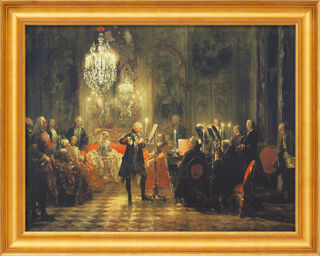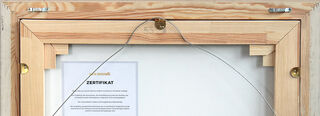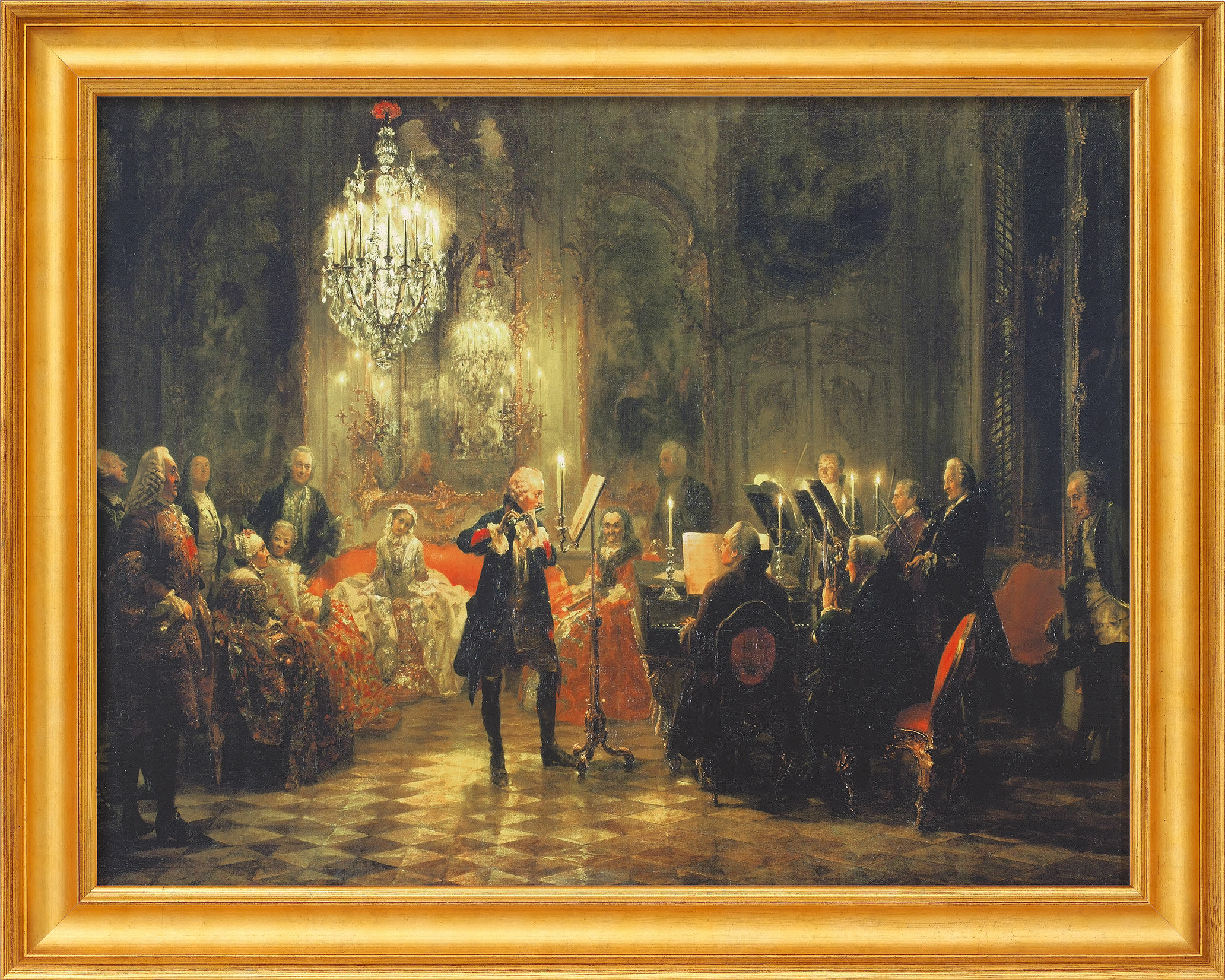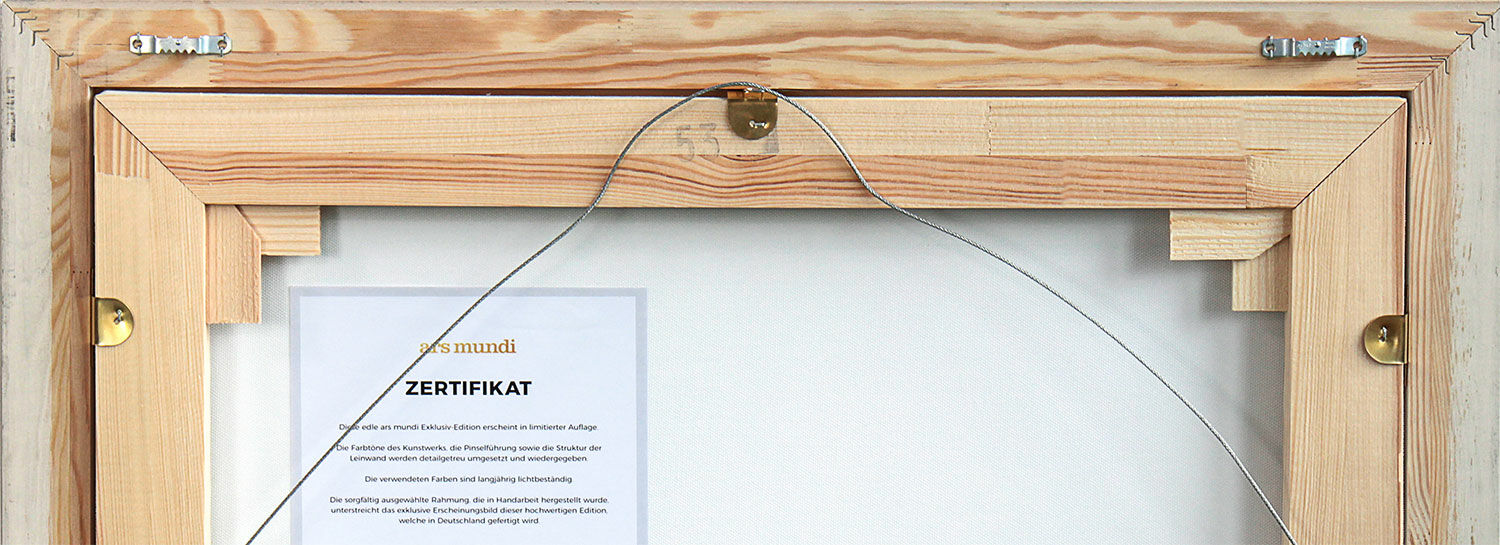Picture "The Flute Concerto of Frederick the Great" (1852), framed


Picture "The Flute Concerto of Frederick the Great" (1852), framed
Quick info
reproduction, Giclée print on canvas | on stretcher frame | framed | size approx. 52 x 65 cm (h/w)
Detailed description
Picture "The Flute Concerto of Frederick the Great" (1852), framed
Original: Oil on canvas, Alte Nationalgalerie, Berlin. Adolph v. Menzel (1815-1905) is considered the most important German realist of the 19th century. He is best known for his depictions of the life of Frederick the Great.
High-quality reproduction using the Fine Art Giclée process directly on the artist's canvas with a hand-finished textured surface. Stretched on a stretcher frame. Framed in a handmade, golden solid wood frame. Size approx. 52 x 65 cm (h/w).
Frame configurator
Customised picture frame

Frame configurator
Customised picture frame






Customer reviews
Frame variant: framed
Das Bild ist traumhaft schön, noch schöner als das Bild im Katalog.
Frame variant: framed
Bild sieht super aus, tolle Qualität. Bin sehr zufrieden.
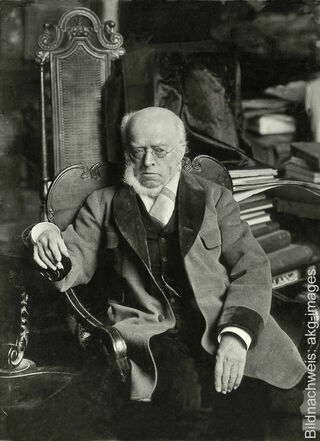
About Adolph von Menzel
1815-1905
Adolph von Menzel was awarded the Order "Pour le Mérite" for science and art, he was also an honorary citizen of the city of Berlin and was finally knighted in 1898. Menzel was not just a history painter. He was one of the great realists of his time and a chronicler of his epoch.
Depiction of typical scenes from daily life in painting, whereby a distinction can be made between peasant, bourgeois and courtly genres.
The genre reached its peak and immense popularity in Dutch paintings of the 17th century. In the 18th century, especially in France, the courtly-galant painting became prominent while in Germany the bourgeois character was emphasised.
Giclée = derived from the French verb gicler "to squirt, spurt".
The giclée method is a digital printing process. It is a high-resolution, large-format printout on an inkjet printer with special different-coloured dye- or pigment-based inks (usually six to twelve). The colours are fade-proof, i.e. resistant to harmful UV light. They have a high richness of nuance, contrast and saturation.
The giclée process is suitable for art canvases, handmade and watercolour paper as well as for silk.
The 19th-century trend of painting originated in France. Gustave Courbet was regarded as the initiator of the realist movement.
In Germany, Wilhelm Leibl and Hans Thoma, among others, were very enthusiastic about this style, which dealt with reality in a realistic way. In the 20th century, there were always realistic tendencies, such as Nouveau Réalisme with artists like Arman and Jean Tinguely and the movement New Objectivity. New forms of realism emerged in the 1960s.
American realism was founded by a group of eight painters of the Ashcan School. They were later joined by Edward Hopper, who became famous for his typically American motifs, depictions of people in architectural or landscape settings in static, actionless situations.

